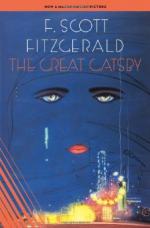|
This section contains 474 words (approx. 2 pages at 300 words per page) |

|
The Superficial Wealth Motif in "The Great Gatsby"
Summary: This essay examines superficial social classes in "The Great Gatsby."
In F. Scott Fitzgerald's novel The Great Gatsby, Fitzgerald establishes an artificial society where money is the objective that everyone longs for. This motif that Fitzgerald creates helps critique the social classes of the time. Throughout the novel, three social classes are depicted, the "new and old money", and the poverty-stricken classes. The contrast of these social classes assist in showing how destructive the nature of America was in the 1920's. The rich were severely separated from the poor, and hoped to keep it that way.
At this time in the 1920's everyone was either extremely affluent or exceedingly poor. One of the classes represented in the novel is the "new and old money" class. These wealthy social classes dwelled on the East and West Eggs, which make them prosperous. Fitzgerald depicts the "new money" class as being extremely showy, vulgar, and pretentious, naturally due to their large...
|
This section contains 474 words (approx. 2 pages at 300 words per page) |

|


